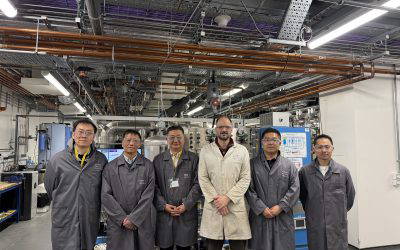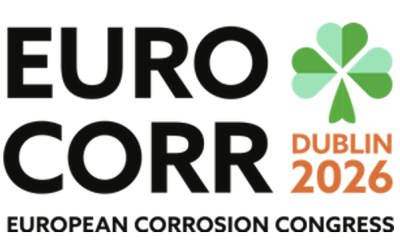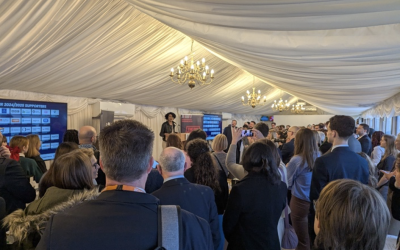On Tuesday, 25th February 2025, the Aberdeen Branch, in a joint meeting with BINDT North-East Scotland, welcomed a talk by Paul Holloway, P.Eng., CGSB UT Level 3, PCN PAUT Level 3, entitled ‘Development of Phased Array Pitch-Catch Technique for Assessment of Contact Point Corrosion on Pipe and Vessel Supports.’
Paul Holloway, President of Holloway NDT and Engineering Inc., is a Professional Engineer and UT Level 3 certified, based out of Ontario, Canada, providing advanced ultrasonic field services, R&D, training, and consulting.
He holds a Master’s degree in Mechanical Engineering and has over 20 years’ experience in ultrasonic testing. He holds numerous international patents and trademarks, including for the PA-CAT technique and various calibration blocks in collaboration with PH Tool. Paul regularly publishes articles for industry journals and hosts a popular ‘You Tube’ channel related to his UT work.
The British Institute of Non-Destructive Testing (BINDT) also publishes training material on this topic and readers may refer to: Phased array ultrasonic testing.
Contact point corrosion is a very common problem in piping and vessel applications. Assets supported by beams, U-bolts or saddles can be subject to localised corrosion at the touch points. The environment may accelerate corrosion where paint blisters and corrosion products form. Contact point corrosion inspection remains a challenging problem as the area of interest is normally inaccessible to traditional methods.
Photo: CUPS – Contact Point Corrosion.
A phased array technique has been developed which uses phased array ultrasonic technology to address contact point corrosion. The technique uses standard instrumentation and probes in a pitch-catch arrangement. Analysis is performed automatically using a novel, cloud-based modelling algorithm. The methodology is currently being used worldwide by NDT service providers using a variety of instrumentation.
Photo: Pitch Catch Attenuation.
There are a number of challenges with Piezoelectric UT techniques:
• Coatings and surface condition
• Coupling of probes to material
• Morphology of the corrosion defects
• Scanner access to restricted areas
The technique can be utilised in both the axial and circumferential beam directions. Some challenges were discovered during development when inspecting in the axial direction. Attenuation regions aligned along the pipe axis at various clock positions were significantly more prominent in seamless pipe versus welded pipe. These localised regions produce significant attenuation artefacts which are then superimposed on the data used for corrosion profile analysis.
Photo: Example of Pitch-Catch Response: Material Artefacts in Welded Pipe vs Seamless Pipe.
Developments have also been made in Pulse echo Edge detection. Images of known or exposed defects can be used to calibrate and verify the techniques and the probe findings from Pulse echo edge detection can be superimposed over the images. This progression has helped service providers to better co-ordinate the echo data with the likely morphology and defect type.
Figure 4: Pulse-Echo Edge Detection.
Little or no reliable information can be correlated to absolute corrosion depth from only pulse-echo amplitude responses. Small, notch-like discrete pitting will always reflect more sound than gradual, blended soft corrosion. However, mathematical summing of carefully selected B-scan data can, in some cases, produce useful morphology information, including width.
Holloway NDT and Engineering have also developed techniques in B-scan Tracking. On pipe with little or no variances in material properties and manufacturing tolerances, the corrosion area is easily discernible from the nominal signature. The B-scan data exhibits straight-line, easy to follow paths which then get distorted at the corroded area.
On noisy pipe amplitude fluctuations unrelated to the corrosion may produce errors in the calculated river bottom profile, usually resulting in over-estimation of wall loss while the amplitude fluctuations exist on the B-scan data, the relative position of each echo peak remains consistent until the corroded area.
Photo: B-Scan Tracking Images of PIPE with Little or no Variance in Properties vs ‘Noisy’ Pipe with Material Variations.
Benefits of the Techniques Here are Mainly:
• No new box required (use of existing equipment).
• The technique gives truly quantitative results.
• The analysis is automated and there is no complicated calibration like other instrumental techniques.
Some of the challenges remain the same but these are largely related to coatings and coupling of the scanners/probes, access/configuration and limits of seamless piping.
The Aberdeen Branch would like to thank Paul for his excellent Presentation that was very well supported with over 70 attendees, and which generated many questions from the Audience.



